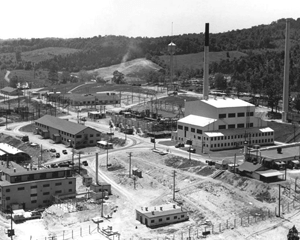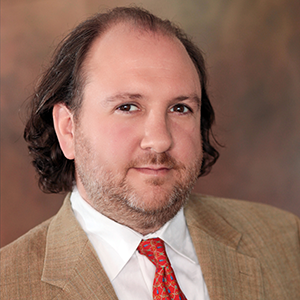Learn about compensation and benefits for sick workers.
 The Atomic City
The Atomic City
Prior to the Manhattan Project, Oak Ridge, Tennessee was a quiet, rural area 25 miles outside of Knoxville. In September 1942, Colonel Leslie R. Groves selected Oak Ridge as the site for a pilot plant for uranium isotope separation. The area’s large supply of electricity and water, as well as its easy accessibility from both highway and rail made it an ideal location for one of the United States largest nuclear development sites. The city’s five ridges also provided natural partitions to separate the reactors and isolate meltdown risks.
Rapid Development
Virtually overnight Oak Ridge went from a quiet community to a boom town. The population increased from 3,000 upwards of 75,000 just three years after construction began in 1942. A new housing structure went up every thirty minutes. The city’s bus system quickly became the sixth largest in the country and Oak Ridge was utilizing twenty percent more electricity than New York City. Secrecy surrounded the city. Prior to Hiroshima, the majority of workers at the Oak Ridge site only had a vague understanding as to the purpose of their work.
 Oak Ridge Today
Oak Ridge Today
The Oak Ridge Plant consisted of four separate sites: Y-12, S-50, K-25, and X-10. S-50 provided the Uranium used at Hiroshima and was demolished shortly after the war. The Y-12 site is still in use today providing storage and clean up expertise to the Department of Energy. K-25 was at one time the largest building in the world and is currently being demolished. The X-10 site is now the Oak Ridge National Laboratory (ORNL); the largest national lab for science and energy in the US.
Sick Workers & Compensation
Like many of the facilities utilized during the Manhattan project, workers were frequently exposed to unsafe levels of radiation and hazardous materials. As a result, an abnormal number of former employees developed various cancers and other chronic illnesses long after their work had been completed.
Former Oak Ridge workers are eligible to file EEOICPA claims as part of the Special Exposure Cohort (SEC). SEC is a designation given to specific work sites or groups of workers that allow them to be compensated for their illness without having to prove a link between their work exposure and diagnosis. Those who qualify for SEC have a much better chance of a fast and successful claim. To qualify for SEC one must have:
To qualify for SEC one must have:
- Worked at the gaseous diffusion plant in Oak Ridge, Tennessee for a total of at least 250 days before February 1, 1992, and were monitored for radiation exposure with dosimetry badges or had jobs with similar exposures to those monitored
- Been diagnosed with one of 22 specified forms of cancer
**Even if you do not meet these requirements or worked elsewhere on the Oak Ridge Site you still may be eligible for compensation. Please contact your local Resource Center to learn more about eligibility.
More Information and Useful Links
- Oak Ridge Resource Center
Jackson Plaza Office Complex
800 Oak Ridge Turnpike, Suite C-103
Oak Ridge, TN 37830
Telephone: (865) 481-0411 - American Museum of Science and Energy
- Oak Ridge Wikipedia Page
- Oak Ridge Y-12 Site Wikipedia Page
- Oak Ridge K-25 Site Wikipedia Pag
- Oak Ridge S-50 Site Wikipedia Page
- Atomic Heritage Foundation
- Frank Munger’s Oak Ridge Blog
- Oak Ridge National Laboratory
- Amazing Pictures of Oak Ridge from The Atlantic
- Children’s Museum of Oak Ridge
- Coalition of Oak Ridge Retired Employees
- Oak Ridge Plants’ Payout Statistics
By Brian Carrigan

Get No-Cost Home Health Care!
Need in-home medical assistance? Remain at Home is a proud to serve nuclear workers under EEOICPA. Call us today at (800) 718-5658 or use the form below!
Testimonials
“…the feedback that I have received from our patients has been overwhelmingly appreciative for the quality of care and compassion your staff has provided… Keep it up!”
-Mark R. Firth, MD
Internal Medicine
“No words will ever express our sincerest appreciation for all you did to assist with our father’s needs during his remaining days…RAH went above and beyond our hopes and the staff you assembled to care for him was truly amazing!!
-C. Stewart-Staudigl
Client Family


